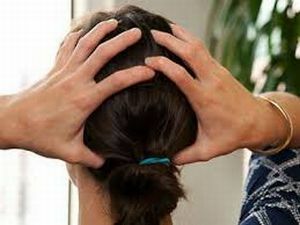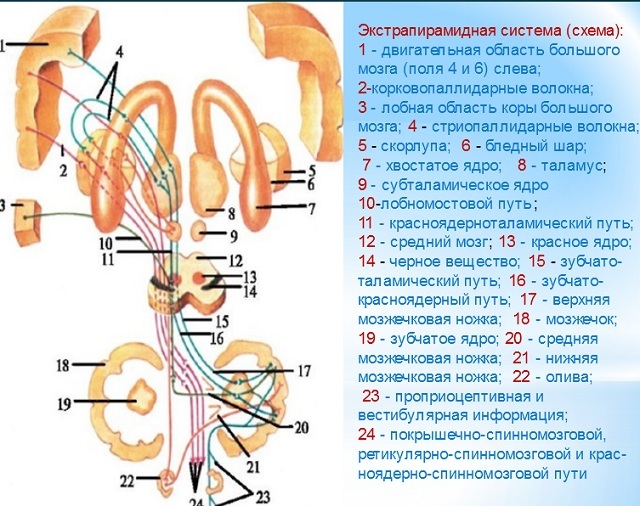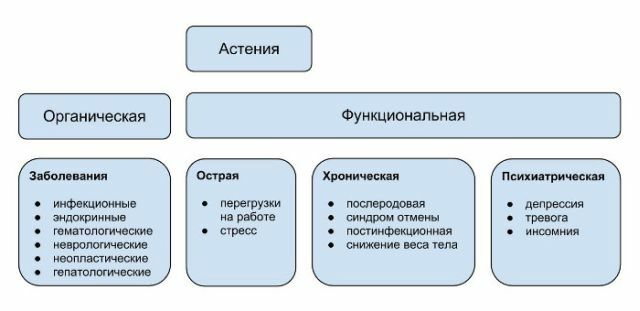 Short-term numbness of one or another part of the body is a familiar situation for many, and usually there is nothing terrible about it, but if the head and discomfort are numb, the serious reason to consult a doctor is to find the true causes of the problem and prescribe the right treatment.
Short-term numbness of one or another part of the body is a familiar situation for many, and usually there is nothing terrible about it, but if the head and discomfort are numb, the serious reason to consult a doctor is to find the true causes of the problem and prescribe the right treatment.
But it is not always necessary to beat an alarm.
Contents
- Not a symptom but a temporary failure
- Neurological and other medical conditions
- Clinical features and localization of sensations
- Diagnostic measures
- First aid
- When is it urgent to see a doctor?
- Approach to treatment
Not a sign of illness, but a temporary failure of
Sometimes the problem is not so terrible if it's not directly related to health. In a number of situations, numbness of the head is considered the norm, since the strains are strained muscles.
Short-term numbness or tingling is usually observed after waking, if a person in a dream took uncomfortable poses.
Being in a long time in one position( for example, sitting at a computer), the muscles experience a strong tension and become "numb".There may also be a squeezing or pinching of the nerve.
Feeling of numbness in the head and goosebumps are considered the norm and with sudden neck movements. In this situation, the blood vessels  experience an unexpected spasm.
experience an unexpected spasm.
Each of these moments is accompanied by malfunctions in the blood circulation of the brain, which sometimes leads not only to numbness, but also to dizziness. The state lasts for about 10-15 minutes. It's enough to wait, when the discomfort will pass.
Some temporary medications may cause temporary malfunctions. Often numbness of the head is accompanied by taking statins. Enough to stop taking them, and the symptoms will go away by themselves.
Neurological and Other Diseases
The reasons why the head is numb in one part or another are numerous, but very often it is a symptom of one of the neurological diseases:
- Often this condition is accompanied by problems of the cervical spine. The most common disease of this area is the osteochondrosis , which leads to pinching of the nerves, which provokes not only discomfort in tactile sensations, but also stiffness in the movements of the head.
- Vascular diseases of the brain and cerebrovascular disease is another diagnosis in which the described symptom is present.
- Observe this symptomatology and with head and spine injuries .Injuries to the back or cervical region, as well as the head, are accompanied not only by the "goose bumps" on the body, but also by severe pains, paralysis and a host of other symptoms.
- It is not without the numbness of the scalp and with neuroinfections .
- With age, develops multiple sclerosis , the essence of which is the replacement of connective nerve tissue. Hence the numbness of the skin on the head, the weak sensitivity of the limbs, discoordination.
- Tumors of the head or spine , expanding, begin to put pressure on neighboring areas, expanding their space. Under pressure( and displacement), nerves and blood vessels enter, metastases penetrate into the tissues. The processes are accompanied not only by numbness, but also by very severe pains.
Numbness, tingling and tingling are manifestations of the sensitivity of the scalp, and the longer these sensations are, the more weighty the reasons that provoke them should be.
 The most harmless can be called colds associated with hypothermia.
The most harmless can be called colds associated with hypothermia.
Heart diseases, hypertension, excessive weight lead to disruption of normal blood circulation, which causes vasospasm, resulting in numbness. This condition can be regarded as predinsultnoe.
All these factors independently( without the participation of physicians) can neither be diagnosed nor eliminated. Therefore, people's treatment is excluded a priori here.
Features of the clinical picture and the localization of sensations
When numbness of the head is not considered normal, then it is a clinic, the etiology of which can only be established by a doctor.
After evaluating the nature of the symptoms, the place of localization of sensations, taking into account the presence of specific diseases, and also by conducting appropriate diagnostics, the expert will make his verdict.
Numbness of the head can be complete, but sometimes only a specific part of it is affected, which indicates the dysfunction of certain organs. Most often the nervous system is affected:
- If the is numb with the left or right part of the of the head, then it can be caused by vessels in which blood circulation is disturbed, or jammed nerves. But sometimes the cause is the pathology of the brain and cerebral tumors.
- If the of the nape of the becomes numb, the cervical osteochondrosis or other disorders of the cervical region usually cause this.

- Numbness and tingling in the of the front of the head is caused by inflammation of the trigeminal nerve. Signs of this are pain, giving in the jaw, ear and eye.
- On , the frontal part of is affected by increased intracranial pressure.
The problem, localized only in one side of the head, indicates the pathology of the cerebral structure. In this case, the focus is concentrated in the opposite area of the skull.
Diagnostic measures
To determine the location of the source of the problem and its cause to the doctor will help a multifaceted examination of the patient's condition. To the visual diagnosis and study of the analyzes, a differential study is added, which allows one hundred percent to determine the cause and extent of the lesion.
The complex of research procedures:
- starts with of the general blood test , which allows to detect a deficiency in the body of vitamin B12 and the presence of iron deficiency anemia;
- such instrumental studies as radiography and spiral computed tomography , will give an opportunity to assess the state of the brain, skull, spine and identify pathologies if they exist;
- finding a damaged nerve will help electroneuromyography ;
- Doppler ultrasound study provides an opportunity to assess the condition of blood vessels and help diagnose cardiovascular disease;
If, after these studies and tests, the picture remains unclear, the doctor will prescribe additional procedures based on the patient's condition.
First Aid Assistance
 When short-term numbness of the head is observed, referring to the norm, the tension can be relieved by an easy massage.
When short-term numbness of the head is observed, referring to the norm, the tension can be relieved by an easy massage.
With discomfort, which is caused by pathology, it does not work - you must first eliminate the cause( and only the doctor can reveal it).Do not look for ways to "help" yourself on your own, so as not to harm self-medication even more.
The main step that the patient must make is to go straight to the medical facility. If you can not do it yourself, you need to call an ambulance.
When is it urgent to see a doctor?
Periodically occurring prolonged numbness and tingling in the head is not all perceived as an excuse to consult a doctor. But when there is the following concomitant symptomatology, it's time to sound the alarm:
- Tingling and numbness are often accompanied by by dizziness and a presyncopal condition of .Here, permanent drowsiness, general weakness and unsteadiness of gait are possible.
- Nausea appears, often resulting in vomiting of .The patient is difficult to control the bladder - there is an involuntary emptying.
- Numbness may result in musculoskeletal dysfunction .Problems arise either in separate parts of the body, or complete paralysis occurs.
- The difficulty with movements is reflected and on speech, there is numbness of the tongue, it is impossible to understand what the person is saying.
Even one of the described factors is already a serious reason to visit a neurologist or surgeon if this is due to trauma.
Treatment approach
Complex treatment is prescribed only after a complete examination of the patient. The doctor prescribes the medicines individually to each  patient, taking into account the causes that led to numbness of the head.
patient, taking into account the causes that led to numbness of the head.
The first step in therapy will be a blockade of pain, a decrease in temperature( if present) and the introduction of drugs that restore the function of the circulation.
If numbness is a symptom of one of the diseases, the main goal will be the treatment of this disease. In some cases, you will have to tune in to long-term therapy and at least long-term rehabilitation.
The positive outcome of treatment in this situation will depend not only on the doctors, but also on the patient himself, who is fully responsible to his condition.
The above symptomatology should not be left without attention. The earlier a patient turns to a medical institution, the easier and faster the treatment will be. Every day of delay reduces the chances of recovery and provokes severe consequences.



